RDF Pellet Project in South Korea
Refuse Derived Fuel, short as RDF, is fuel product processed by removing waste water, metals, glass and other non-combustible solids from Municipal Solid Waste (MSW).
Pelletized RDF is easy to store and transport, has good flammability and can be completely burned.
RDF pellets are solid fuel for boilers & furnaces in multi industries, such as cement processing plants, steel mills, thermal power plants, agricultural and horticultural fields, public institutions, schools, etc.
Factors affecting the quality of RDF PELLET include:
Garbage traits: moisture content, flammable waste component ratio, garbage collection method, waste sizes, impurity content, etc.
Treatment process: screening out non-combustible waste, shredding to reduce size, drying to control moisture content, pelletizing to compress volume.
Pelletized RDF is easy to store and transport, has good flammability and can be completely burned.
RDF pellets are solid fuel for boilers & furnaces in multi industries, such as cement processing plants, steel mills, thermal power plants, agricultural and horticultural fields, public institutions, schools, etc.
Factors affecting the quality of RDF PELLET include:
Garbage traits: moisture content, flammable waste component ratio, garbage collection method, waste sizes, impurity content, etc.
Treatment process: screening out non-combustible waste, shredding to reduce size, drying to control moisture content, pelletizing to compress volume.
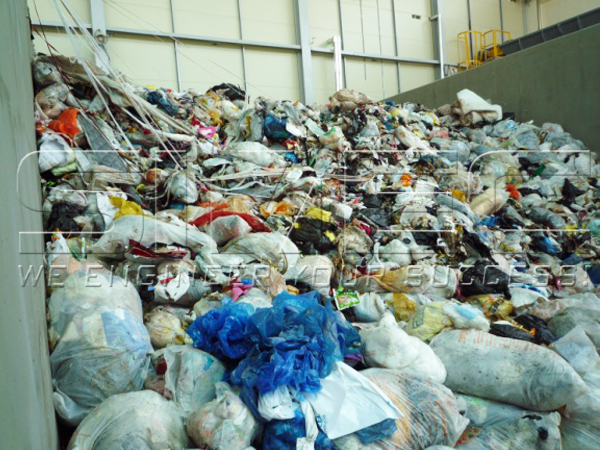
Municipal Solid Waste
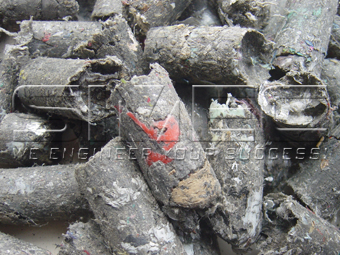
RDF Pellets
For recycling resources, South Korea government invested on Municipal Solid Waste treatment plants to create the best solution for solid fuel recovery from MSW. The projects adopted SIMEC pelletizing technology to produce RDF pellets. The pellet fuel will be supplied to boilers & furnaces in multi industries to generate energy.
One of the projects is located near Incheon, has been in commercial operation since the end of 2011.
Production capacity is 8~10 tons/hour RDF pellets. In total 4 sets of SPM800 RDF pellet mills are in service.
The project is designed to process MSW into RDF pellets, consisting of:
Feeding System: cranes, material dump hoppers.
Pretreatment System: shredder, magnetic separator.
Drying System: dryer, flue gas purification equipment.
Separation System: wind separator, non-ferromagnetic metal separator
RDF Pelletizing System: RDF pellet mill machine, pellet bagging machine.
Production capacity is 8~10 tons/hour RDF pellets. In total 4 sets of SPM800 RDF pellet mills are in service.
The project is designed to process MSW into RDF pellets, consisting of:
Feeding System: cranes, material dump hoppers.
Pretreatment System: shredder, magnetic separator.
Drying System: dryer, flue gas purification equipment.
Separation System: wind separator, non-ferromagnetic metal separator
RDF Pelletizing System: RDF pellet mill machine, pellet bagging machine.
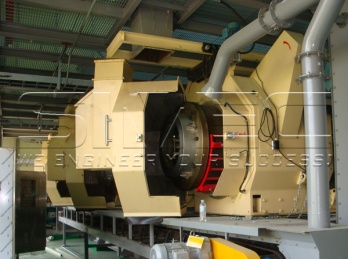
RDF Pellet Machine SPM800
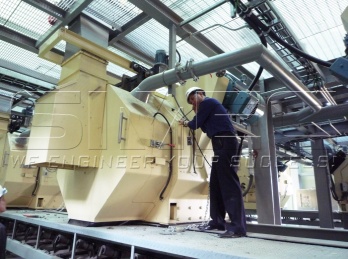
RDF Pellet Plant in South Korea
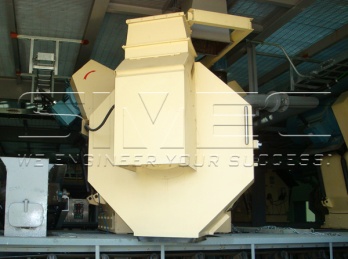
RDF Pellet Mill
Adopting advanced garbage recycling technology, MSW treatment and RDF pellet production will update existing landfills and incinerators. Landfills are a problem as well most landfills lack proper on-site waste management thereby contributing to additional threats to the environment. In the long-term, landfills leak and pollute ground water and other neighboring environmental habitats making waste management very difficult. They also give off potentially unsafe gases. To make RDF pellets is so far very effective waste management solution.
RDF densification brings several advantages:
Increase in bulk density of the material, facilitating the storage and handling, and reducing transport cost.
Reduction of residual moisture, thus increasing the calorific value of the material.
Homogenization of material properties, thus facilitating its use as fuel even on traditional coal plants while maintaining a good combustion control.
Substantial organic residues are eliminated, given the relatively high temperatures during the process; this involves a reduction of odors and a relative disinfecting and sanitizing of the product, which subsequently can be stored for relatively long periods of time.
RDF densification brings several advantages:
Increase in bulk density of the material, facilitating the storage and handling, and reducing transport cost.
Reduction of residual moisture, thus increasing the calorific value of the material.
Homogenization of material properties, thus facilitating its use as fuel even on traditional coal plants while maintaining a good combustion control.
Substantial organic residues are eliminated, given the relatively high temperatures during the process; this involves a reduction of odors and a relative disinfecting and sanitizing of the product, which subsequently can be stored for relatively long periods of time.
RDF Pellets Analysis Report:
| Parameter | Unit | Results | |
| RDF Pellet Diameter | mm | 15 | |
| RDF Pellet Length | mm | 43 | |
| Lower Calorific Value | Kcal/kg | 4569 | |
| Moisture in Analysis | % | 1.29 | |
| Ash Content | % | 18.1 | |
| Chloride | % | 0.96 | |
| Sulfur | % | 0.31 | |
| Metallic Elements | Mercury (Hg) | Mg/kg | None |
| Calcium (Ca) | Mg/kg | 1.49 | |
| Lead (Pb) | Mg/kg | 48.54 | |
| Arsenic (As) | Mg/kg | None | |
| Chromium (Cr) | Mg/kg | 34.14 | |
| Antimony (Sb) | Mg/kg | 5.47 | |
| Cobalt (Co) | Mg/kg | 1.98 | |
| Copper (Cu) | Mg/kg | 60.32 | |
| Magnesium (Mg) | Mg/kg | 137.52 | |
| Nickel (Ni) | Mg/kg | 16.62 | |
| Thallium (Tl) | Mg/kg | None | |
| Vanadium (V) | Mg/kg | 10.9 | |
|
Element Determination (Addition relationship) |
C | % | 53.10 |
| H | % | 6.35 | |
| O | % | 38.48 | |
| N | % | 0.71 | |
| S | % | 0.39 | |
| Total | % | 100 | |
The trash problem is global. SIMEC technology is developed for resources recycling projects. We believe garbage can be managed well with the right engineering support, and recover value from the waste material. This is the mission of SIMEC.
© Copyright of articles and pictures on this site belongs to SIMEC. Any company, media, website or individual are not allowed to reprint, reproduce, repost, modify or use in other ways without permission. Otherwise SIMEC will have the right to pursue legal responsibilities.
© Copyright of articles and pictures on this site belongs to SIMEC. Any company, media, website or individual are not allowed to reprint, reproduce, repost, modify or use in other ways without permission. Otherwise SIMEC will have the right to pursue legal responsibilities.